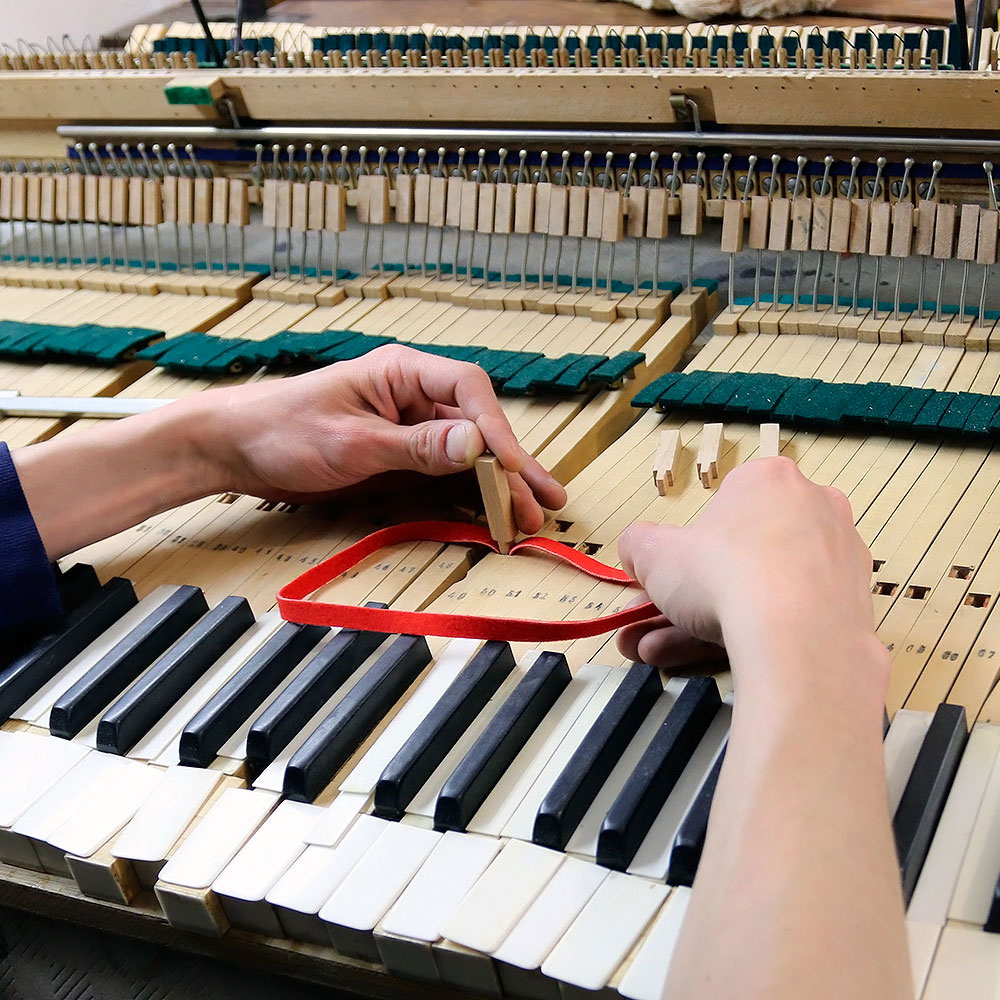What is piano restoration?
An antique or vintage piano can be damaged by the passage of time, changes in temperature or relative humidity, relocation, moths or any other harmful conditions it may have been exposed to during its life, or worn out through normal use. A few definitions may help to understand our approach: a piano is not repaired, but restored, with regard paid to the longevity of the instrument and remaining faithful to the instrument’s true nature. Restorer: person who restores, returns to initial state. Specialist craftsperson who restores works of art or items with artistic value. Restore: Return to a former or original state. Return to good working condition, make new again. Repair while respecting the original nature and style. Repair: Return to working condition. The piano is a complex instrument, at once sturdy and delicate, holding tension of 15 to 18 tonnes or more in its strings. The action, made of thousands of pieces of wood, felt and various metals, works using levers. Time, temperature, humidity and use wear out and warp the action and felts dry out. What is more, the soundboard (the large convex spruce panel over which the strings are strung and which amplifies their vibration) sags or cracks, strings oxidise or go slack as the crucial pinblock that keeps the instrument in tune deteriorates. Restoration returns all the worn parts of their original state, with an eye to the longevity of the instrument. Sometimes certain aspects are improved, for example when the pinblock is replaced and the instrument stays in tune longer. When restoring a piano’s action, all the felt must be replaced so that all sections are equally worn. It is important that there is not an imbalance between those which have recently been changed and those which have not been replaced. Replacing steel strings, as well as bass strings with copper windings, along with the hammer felt, fixing cracks in the soundboard, fitting a new pinblock and any other necessary restoration work can give a piano back the sound it has developed over time. The guiding principle of our work is this: we give instruments back their personality, with their original soundboard, and their own individual feel. This takes time, patience and respect for the original work, and should be reversible. Complete restoration is a financial investment which increases the longevity of the instrument and, most importantly, gives the pianist great musical satisfaction. Restoring a piano means giving it back all its mechanical and musical capabilities in such a way that it can still develop its own individual palette of tones, the product of both the way it was made and the aging process. It means striving to find the original tone by getting as close to original production techniques as possible, and working patiently on the soundboard, string layout and hammers. Given this approach, we do not replace a piano’s soundboard, as this is what gives each instrument its “soul”.




